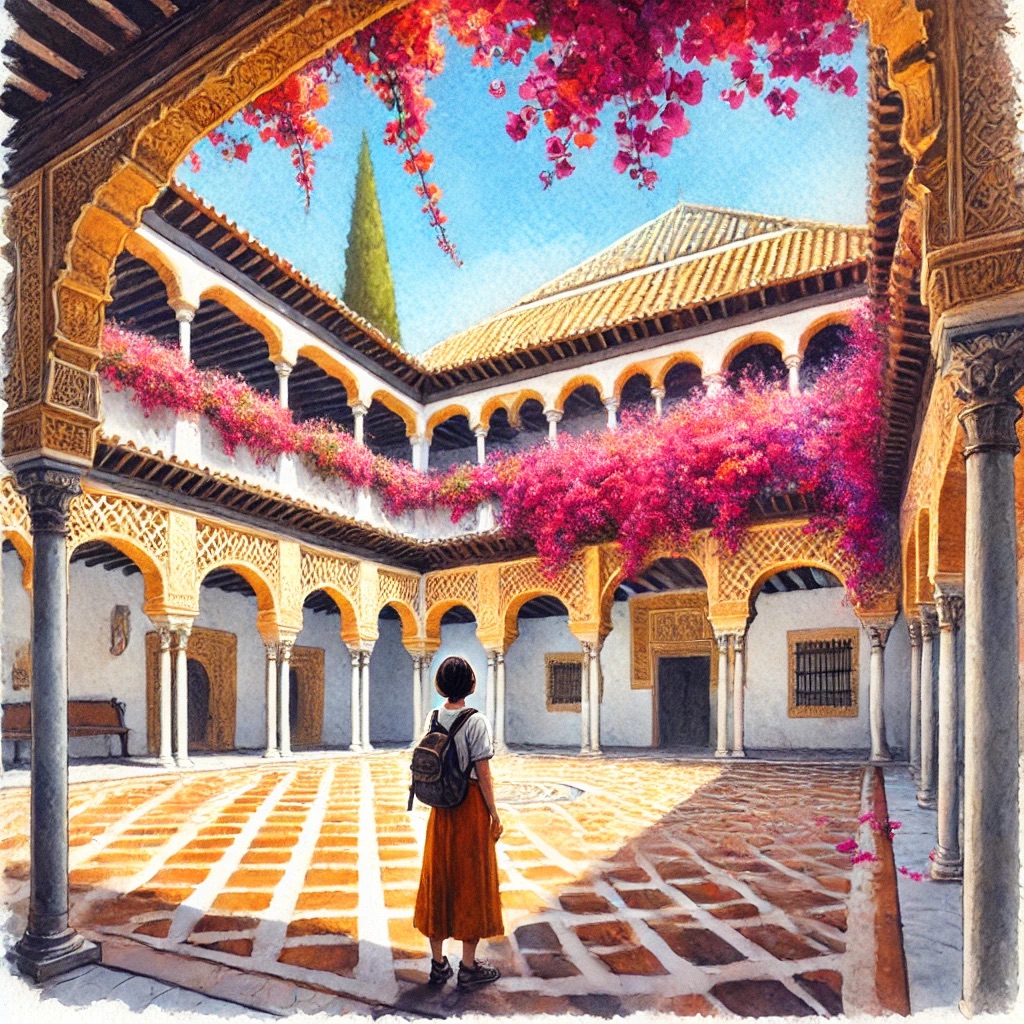ChatGPT:
El Patio, Sevilla, typically refers to the traditional patios found in homes and buildings in Seville, Spain. These patios are an integral part of Andalusian architecture, showcasing a unique blend of Moorish and Christian influences.
Seville’s patios are often centered around a courtyard, which serves as a cool, shaded retreat from the heat of the city. They are usually adorned with vibrant tiles (azulejos), lush plants, and sometimes a central fountain, creating a peaceful and inviting atmosphere. The design of these patios reflects the region’s historical emphasis on indoor-outdoor living, with the courtyard often serving as the heart of the home.
The patios are especially famous during the annual Festival of the Patios in May, where residents open their homes to the public to showcase their beautifully decorated courtyards. These spaces are filled with flowers, decorative pottery, and other traditional elements, making them a quintessential part of Seville’s charm and cultural heritage.
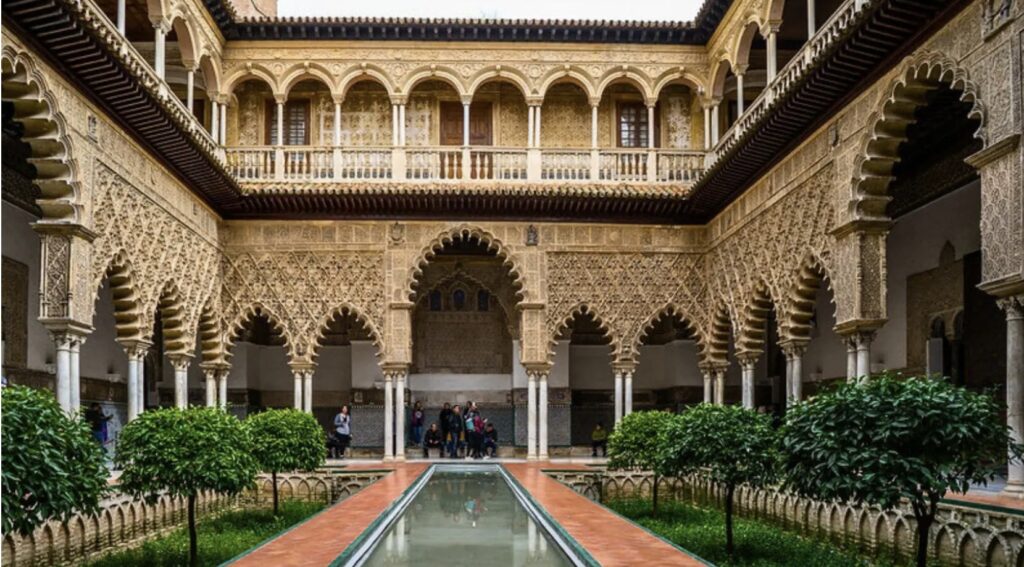
The patios of Seville, known for their beauty and tranquility, are a reflection of the city’s rich cultural history, blending influences from various civilizations that have left their mark on Andalusia over the centuries. The origin, history, and special features of these patios are deeply rooted in the region’s past.
Origin and History
The concept of the patio dates back to the Roman era, where central courtyards were a common feature in the design of Roman villas. These spaces served as open-air centers of the home, allowing light and air to circulate, which was essential in the warm Mediterranean climate.
With the Moorish conquest of Spain in the 8th century, the design of patios evolved significantly. The Moors introduced elements of Islamic architecture, including intricate tile work, water features, and an emphasis on privacy. The patios became more secluded, enclosed spaces within homes, designed to be oases of tranquility, shielded from the outside world. The inclusion of fountains and lush greenery was inspired by Islamic gardens, symbolizing paradise on earth.
After the Christian Reconquista, Seville’s architecture began to incorporate Gothic and Renaissance elements, leading to the hybrid Mudejar style that characterizes many of the city’s patios today. These courtyards continued to be central to the home, often used for social gatherings, religious ceremonies, and daily activities.
Special Features
- Azulejos (Tiles): One of the most striking features of Seville’s patios is the use of azulejos, colorful ceramic tiles that often cover the lower portions of walls. These tiles are not only decorative but also practical, helping to keep the spaces cool.
- Fountains and Water Features: Reflecting the Moorish influence, many patios feature a central fountain or water basin. The sound of running water enhances the peaceful atmosphere and helps to cool the air.
- Lush Vegetation: Patios are often filled with a variety of plants, including orange trees, jasmine, and potted flowers like geraniums and bougainvillea. The greenery provides shade and adds to the sense of a natural, secluded retreat.
- Ironwork: Wrought iron grilles and gates are common in Seville’s patios, offering both security and aesthetic appeal. These elements often feature intricate designs that complement the overall beauty of the space.
- Privacy: A key aspect of patio design in Seville is the emphasis on privacy. The layout of homes often places the patio at the center, surrounded by the house itself, which serves as a protective barrier from the outside world. This design allows residents to enjoy the outdoors in a private, intimate setting.
- Cultural Significance: The patios are not just architectural features; they are integral to Seville’s cultural identity. The Festival of the Patios, celebrated in May, showcases the city’s most beautiful courtyards. During this festival, residents open their homes to the public, displaying their patios adorned with flowers and decorations.
Modern Influence
Today, the patios of Seville continue to be cherished as symbols of the city’s history and cultural heritage. They are often found not only in private homes but also in public buildings, hotels, and restaurants, maintaining their role as peaceful, communal spaces.
The preservation of these patios is a testament to Seville’s commitment to its architectural traditions, and they remain a beloved part of the city’s charm, offering a glimpse into the serene and timeless beauty of Andalusian life.
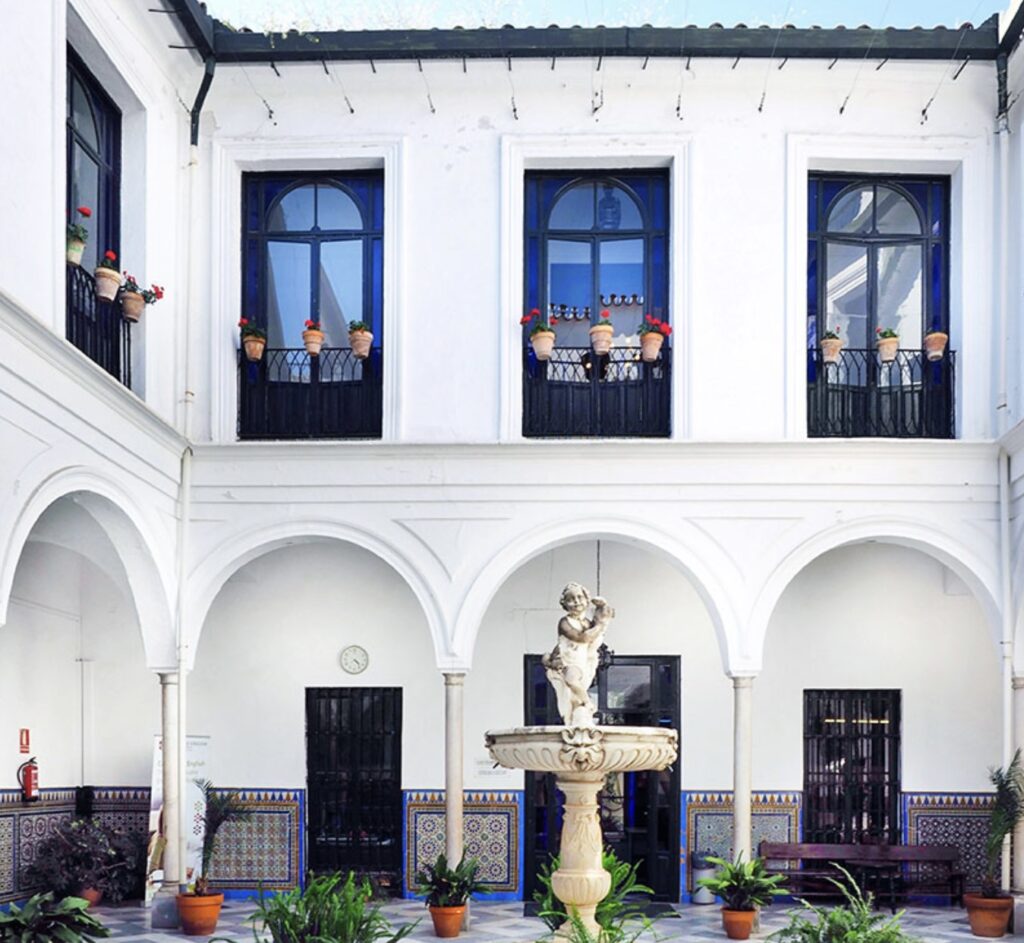
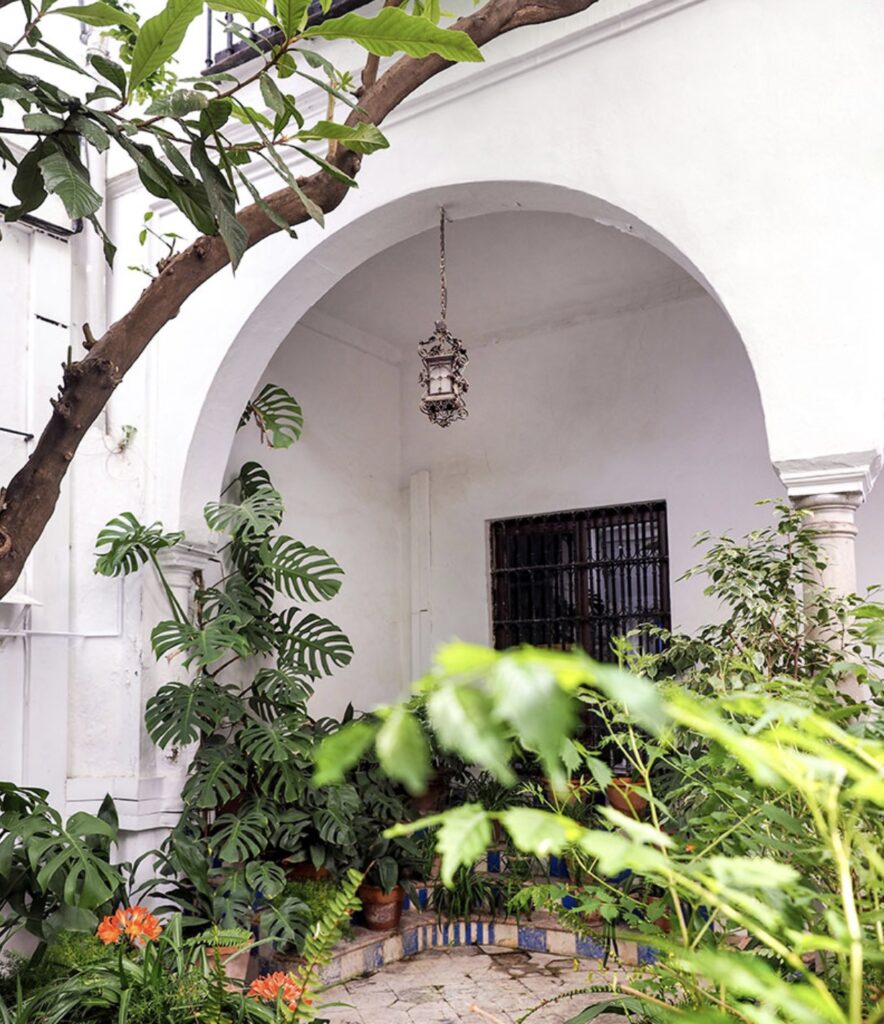
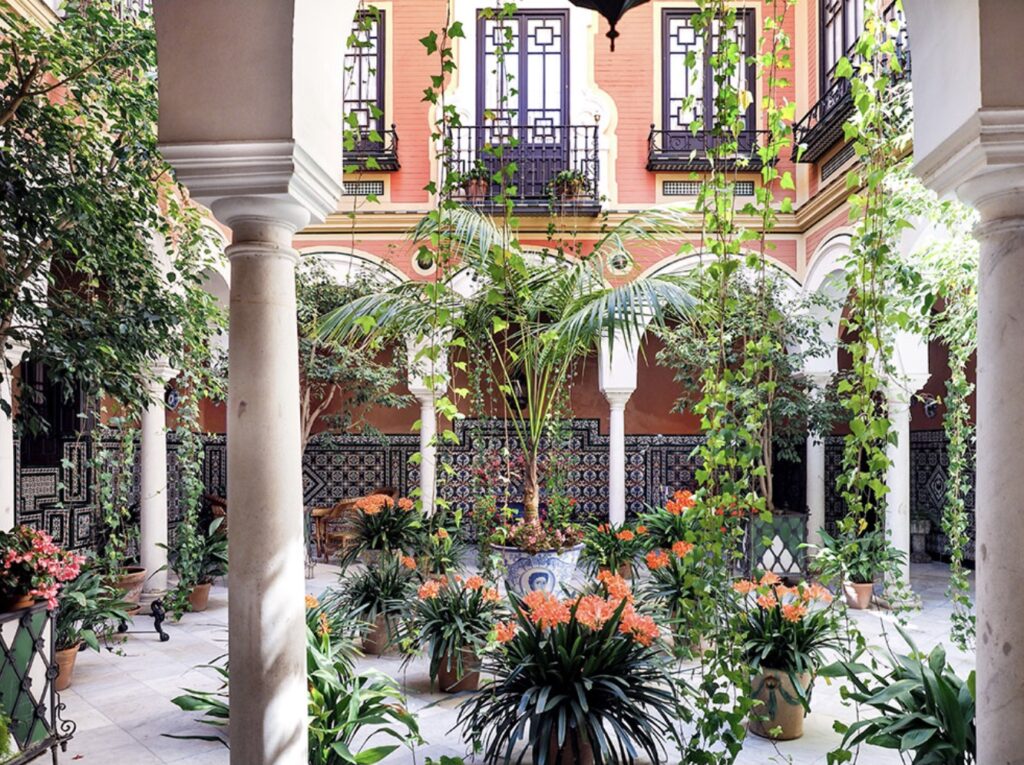
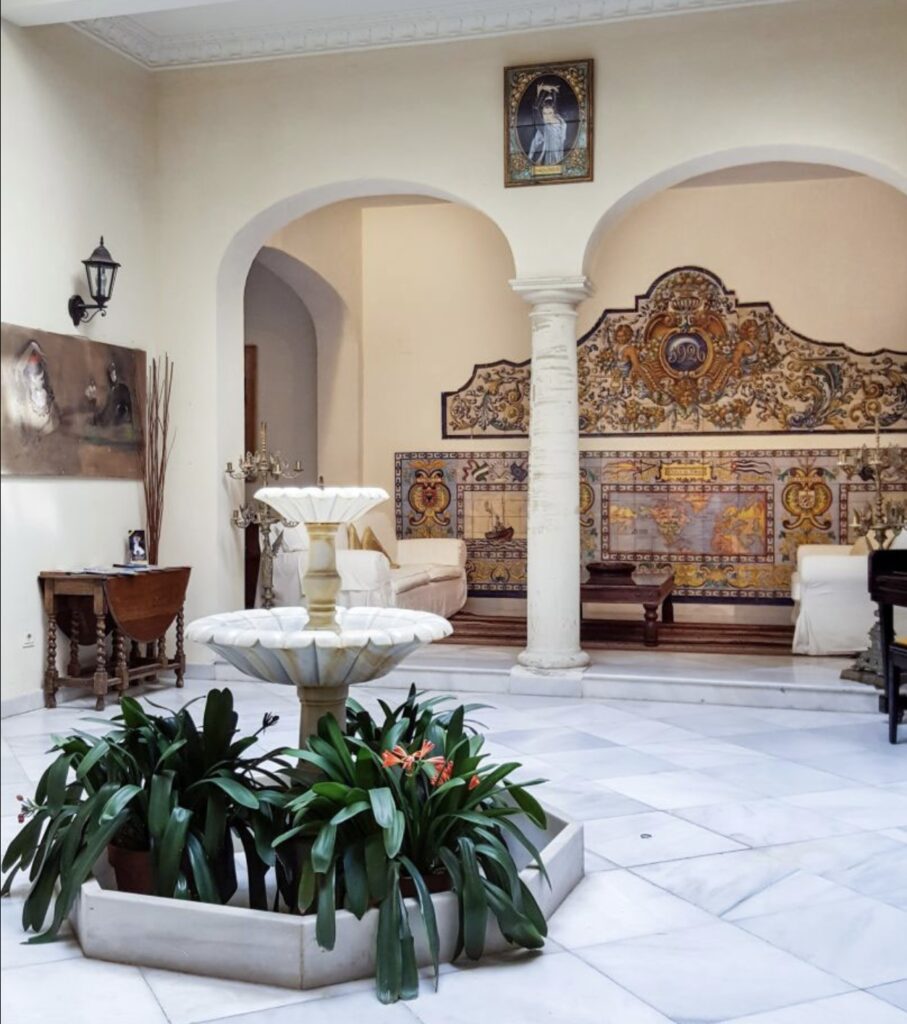
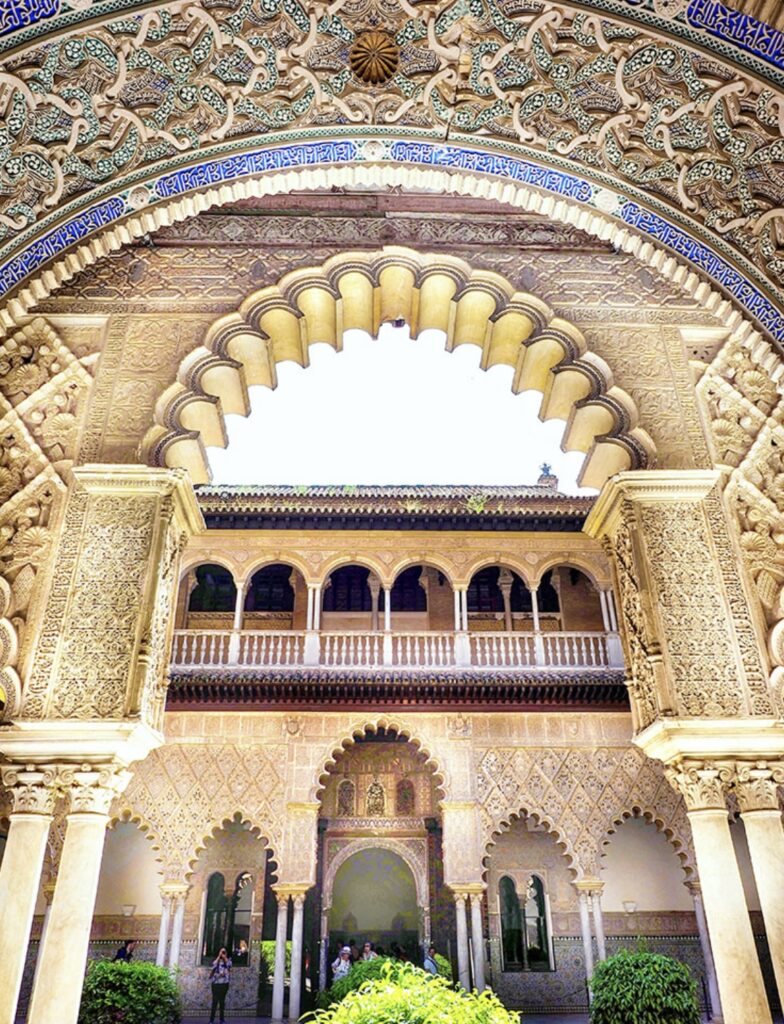
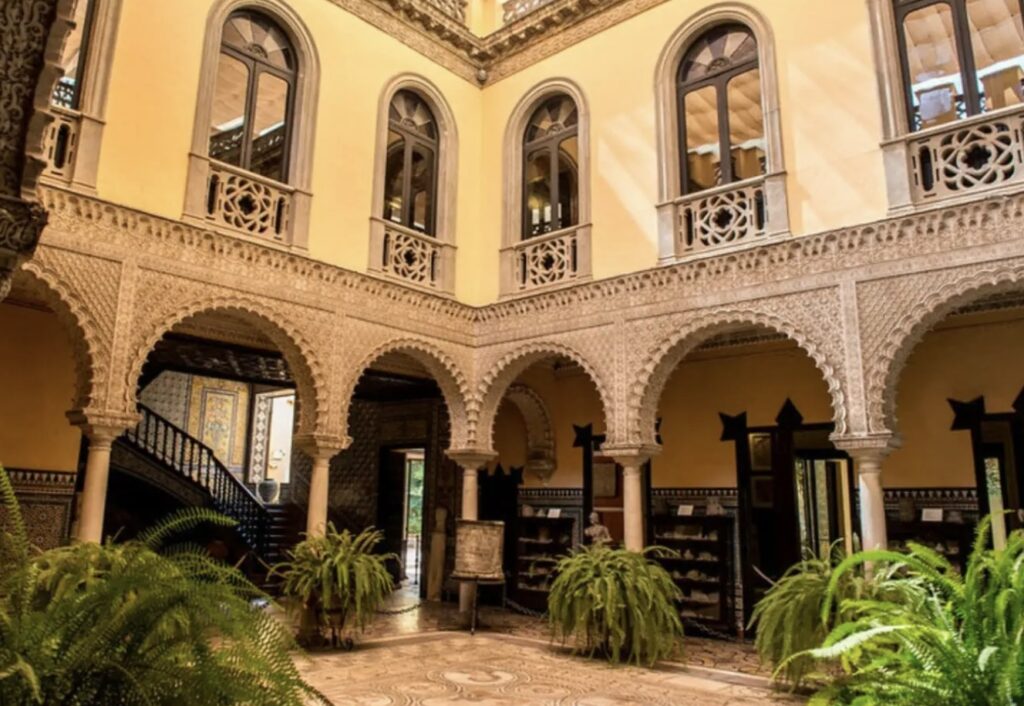
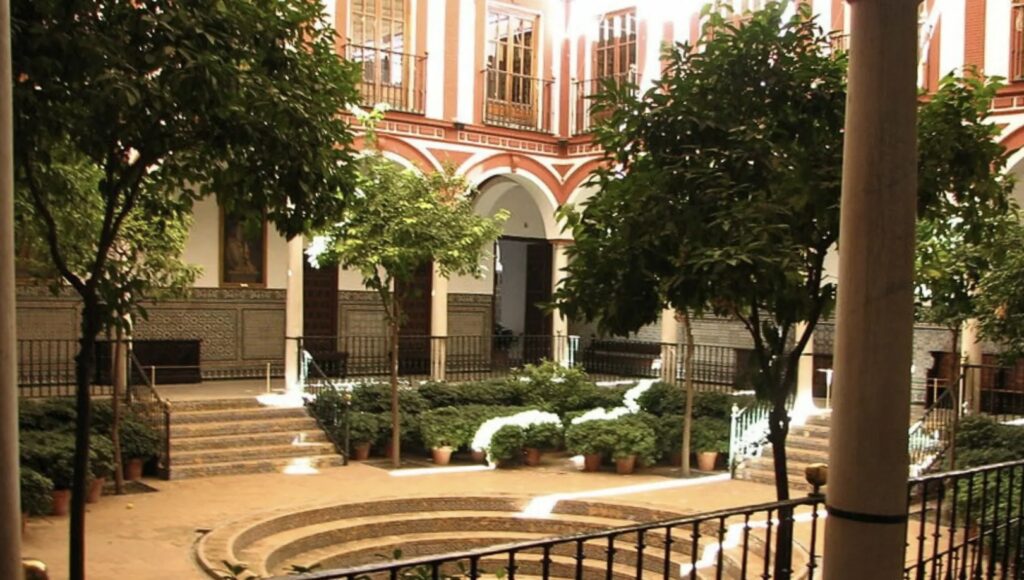
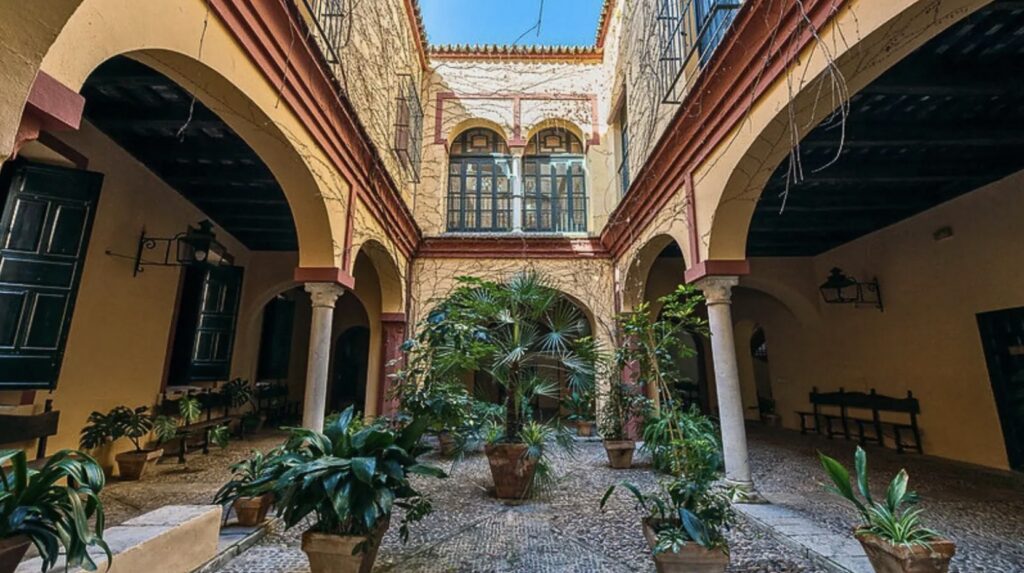
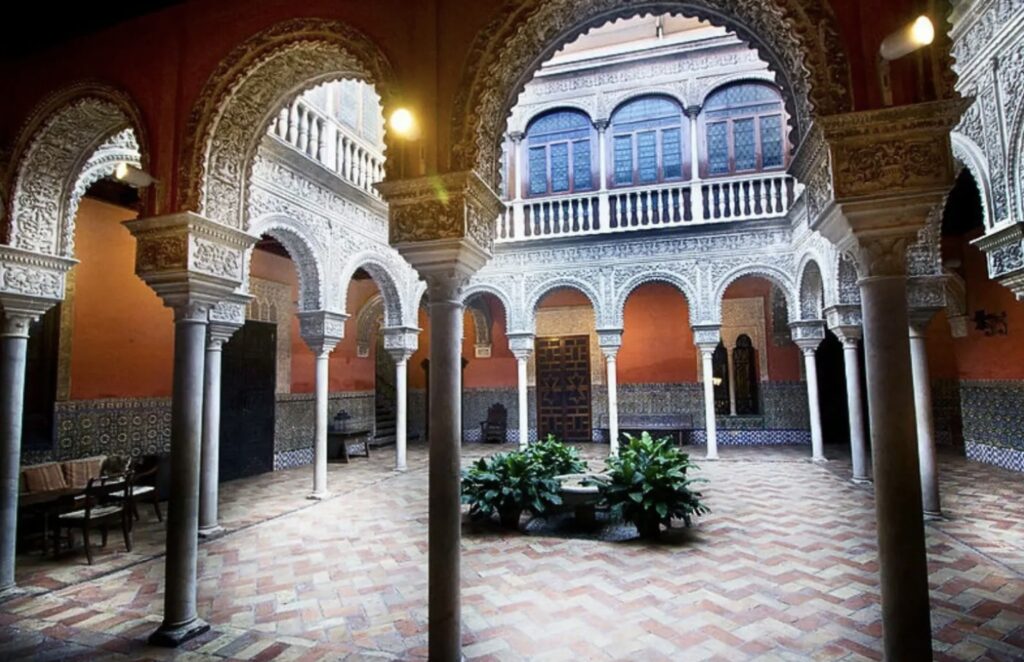
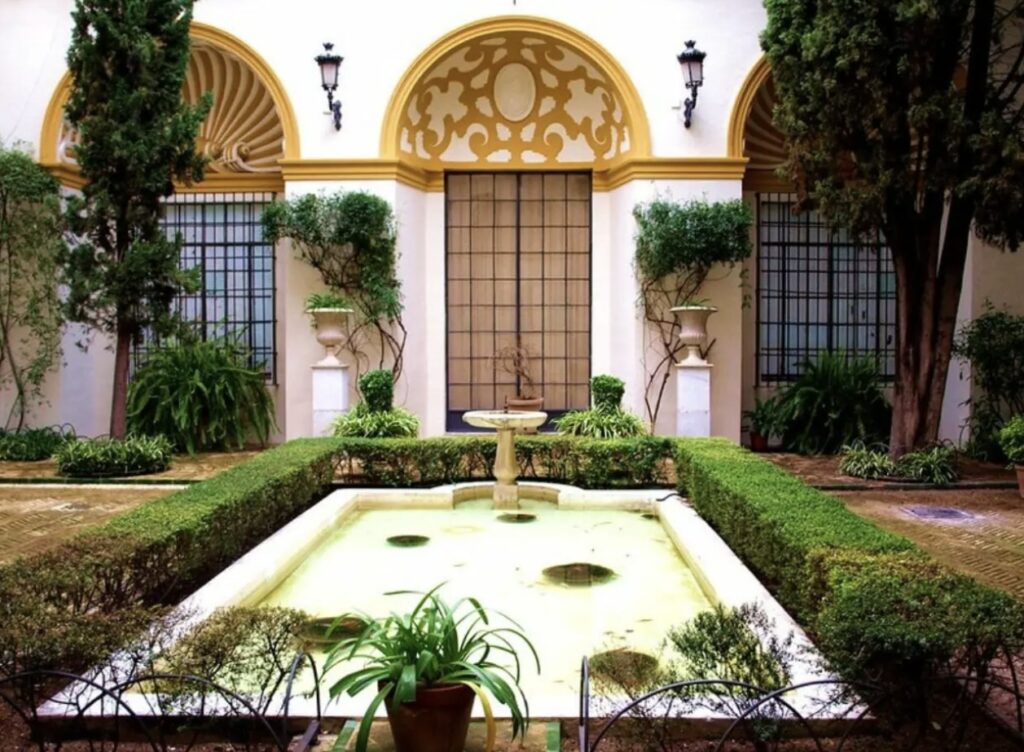
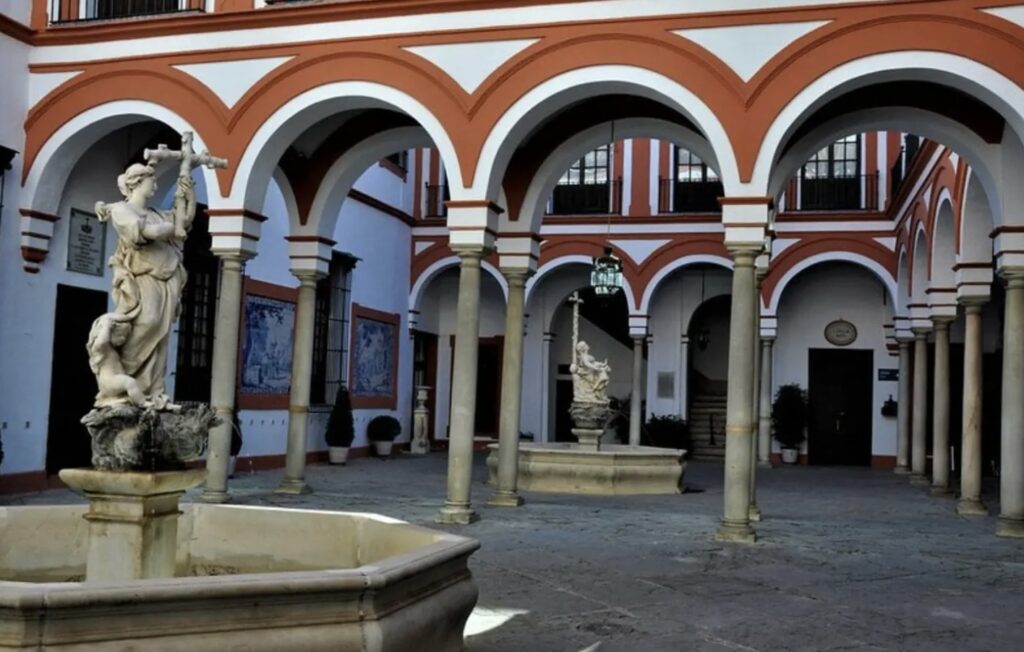
Seville is renowned for its beautiful patios, here are some of the most famous patios in Seville:
1. Patio de las Doncellas (Courtyard of the Maidens) – Real Alcázar
- Location: Real Alcázar of Seville
- Description: One of the most iconic patios in Seville, the Patio de las Doncellas is located in the Real Alcázar, the royal palace of Seville. It features a large central reflecting pool, surrounded by arches adorned with intricate Mudejar plasterwork and tile decoration. The patio’s name refers to a legendary tribute of 100 virgins supposedly demanded by the Moors.
2. Patio de las Muñecas (Courtyard of the Dolls) – Real Alcázar
- Location: Real Alcázar of Seville
- Description: Also within the Real Alcázar, the Patio de las Muñecas is smaller and more intimate than the Patio de las Doncellas. It is named for the small faces, or “dolls,” carved into the capitals of the columns. The courtyard is known for its delicate arches, beautiful tiles, and serene atmosphere.
3. Patio de la Montería – Real Alcázar
- Location: Real Alcázar of Seville
- Description: The Patio de la Montería is the main entrance courtyard of the Alcázar, leading to the palace’s various sections. It is surrounded by impressive arches and is notable for its grand scale and the architectural blending of Mudejar and Gothic elements.
4. Patio del León – Casa de Pilatos
- Location: Casa de Pilatos
- Description: Casa de Pilatos is one of the finest examples of an Andalusian palace, blending Renaissance and Mudejar styles. The Patio del León features a central fountain, surrounded by orange trees and beautiful tilework. The entire house is adorned with exquisite decorations, making it one of Seville’s most visited sites.
5. Patio Principal – Palacio de las Dueñas
- Location: Palacio de las Dueñas
- Description: The Palacio de las Dueñas is a historic palace known for its lush gardens and exquisite patios. The Patio Principal is particularly beautiful, with a blend of Gothic, Mudejar, and Renaissance elements. It is surrounded by arcaded galleries and filled with vibrant plants and flowers.
6. Patio de los Naranjos – Seville Cathedral
- Location: Seville Cathedral
- Description: The Patio de los Naranjos is a historic courtyard originally part of the Almohad mosque that stood on the site before the cathedral. Today, it is part of the Seville Cathedral complex and features orange trees, a fountain, and a peaceful atmosphere. It serves as a reminder of Seville’s Islamic past.
7. Patio de Banderas
- Location: Near the Real Alcázar, Barrio Santa Cruz
- Description: Located near the entrance to the Real Alcázar, the Patio de Banderas is a public square surrounded by historic buildings. It offers stunning views of the Giralda tower and is a popular spot for tourists to start their exploration of Seville’s old town.
8. Patio de las Flores – Barrio Santa Cruz
- Location: Barrio Santa Cruz
- Description: In the heart of the historic Barrio Santa Cruz, the Patio de las Flores is a charming, small courtyard famous for its vibrant flowers and whitewashed walls. It’s one of the many picturesque patios that define the character of this old Jewish quarter.
These patios, each with its own unique history and charm, are key to understanding Seville’s architectural and cultural heritage. They continue to be celebrated during events like the Festival of the Patios, where locals and visitors alike can appreciate their beauty and historical significance.
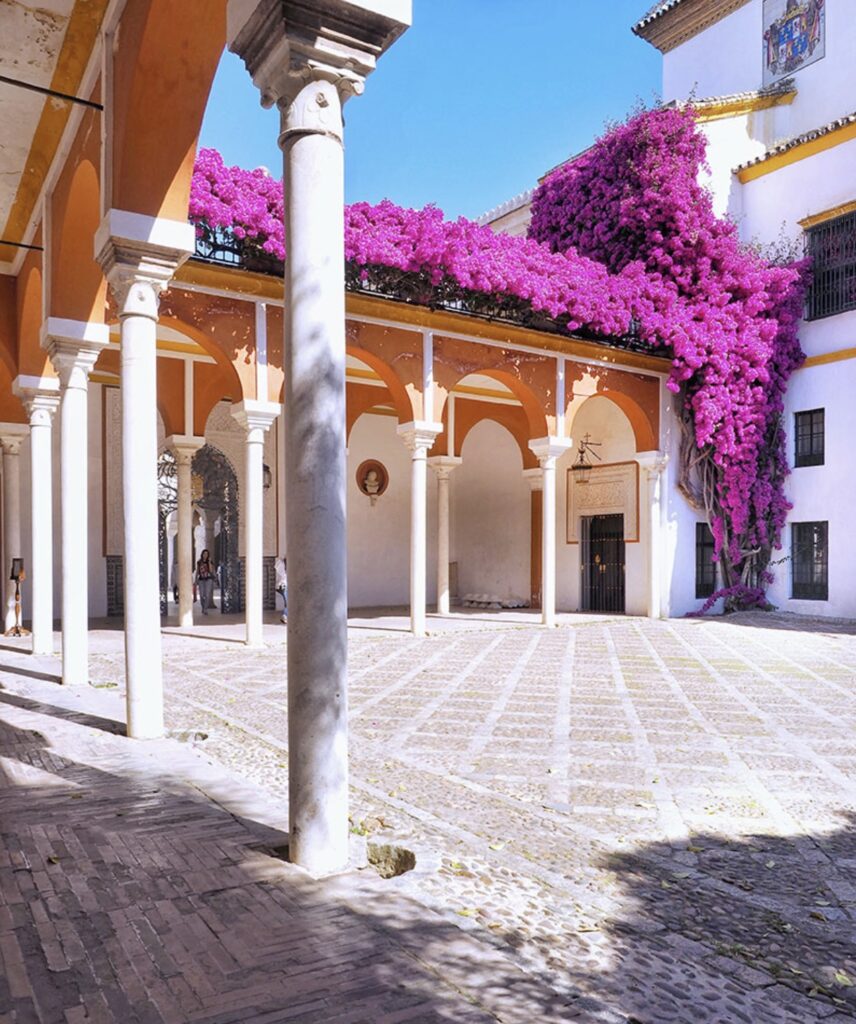
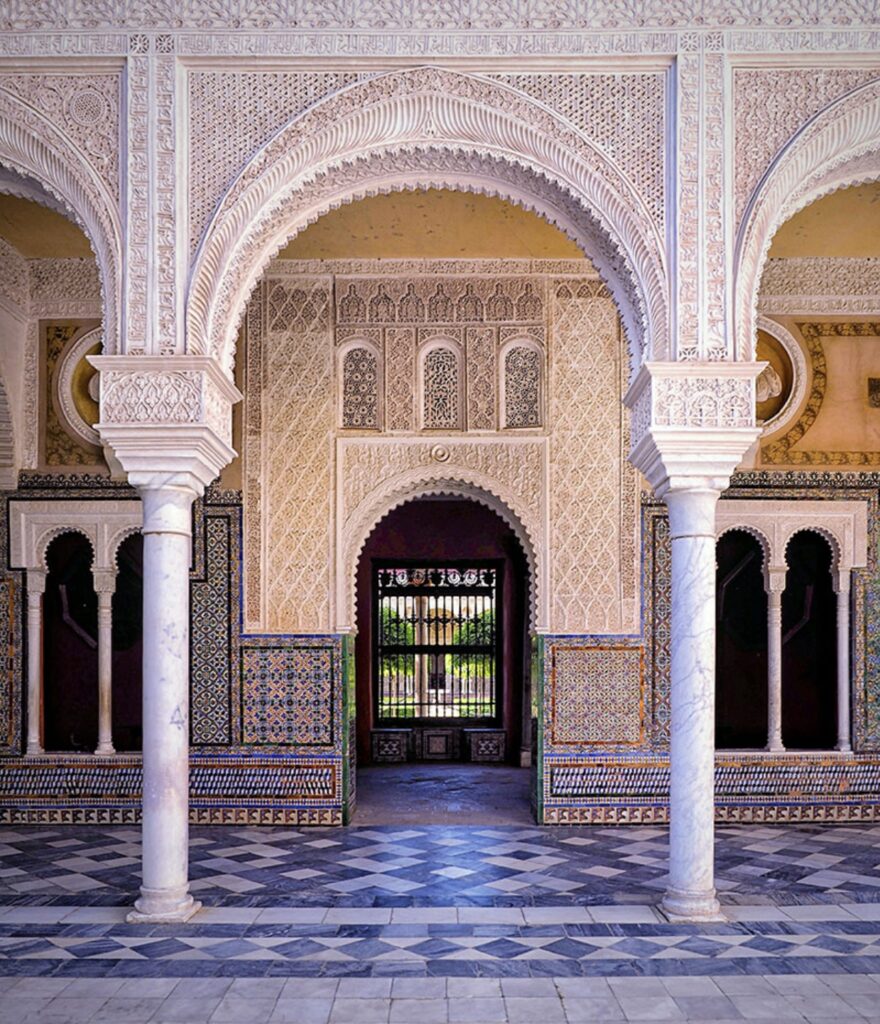
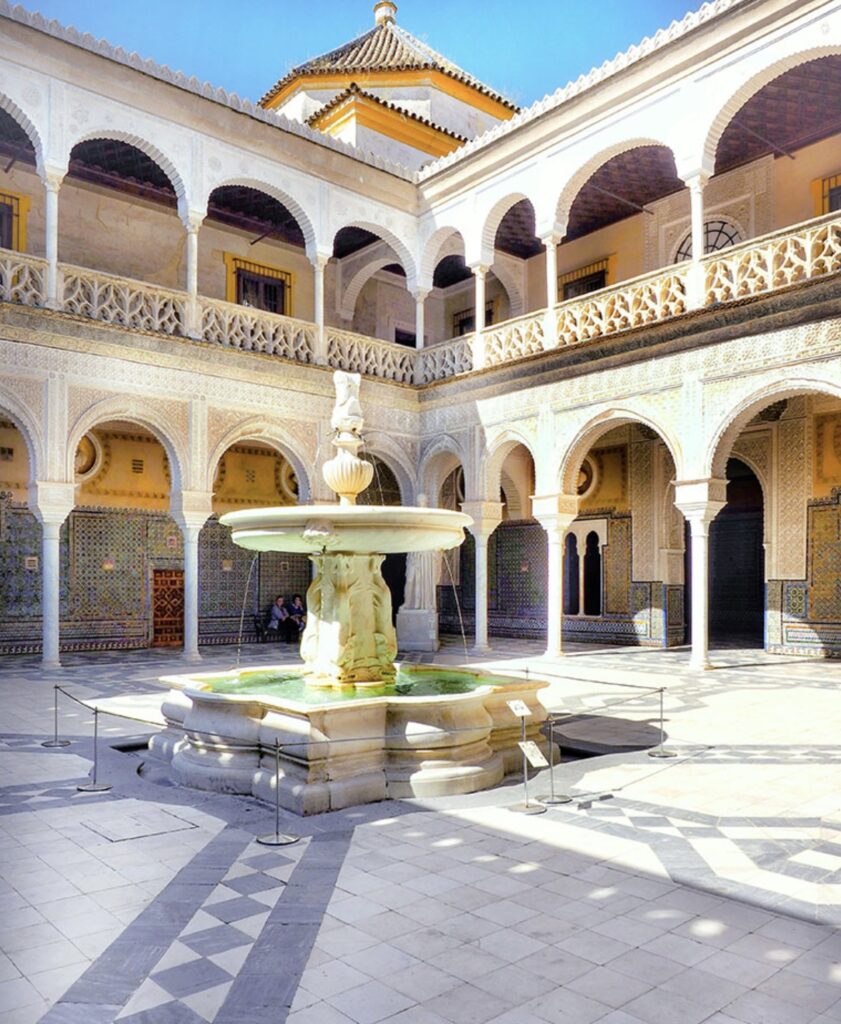
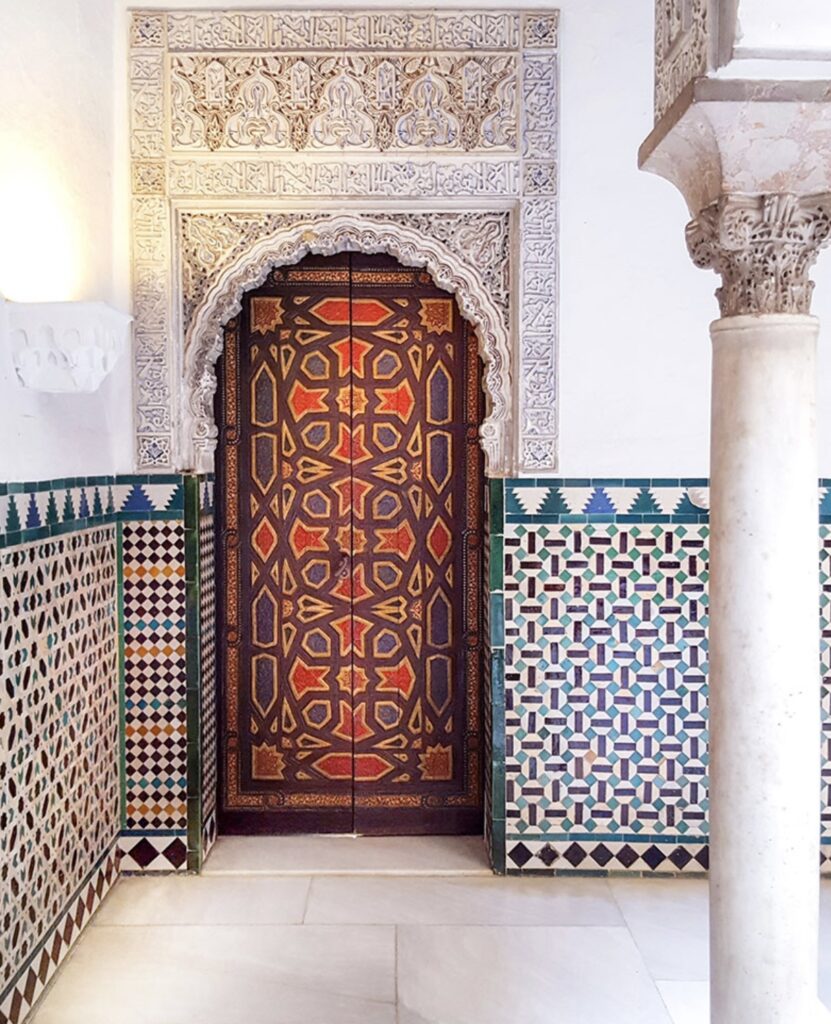
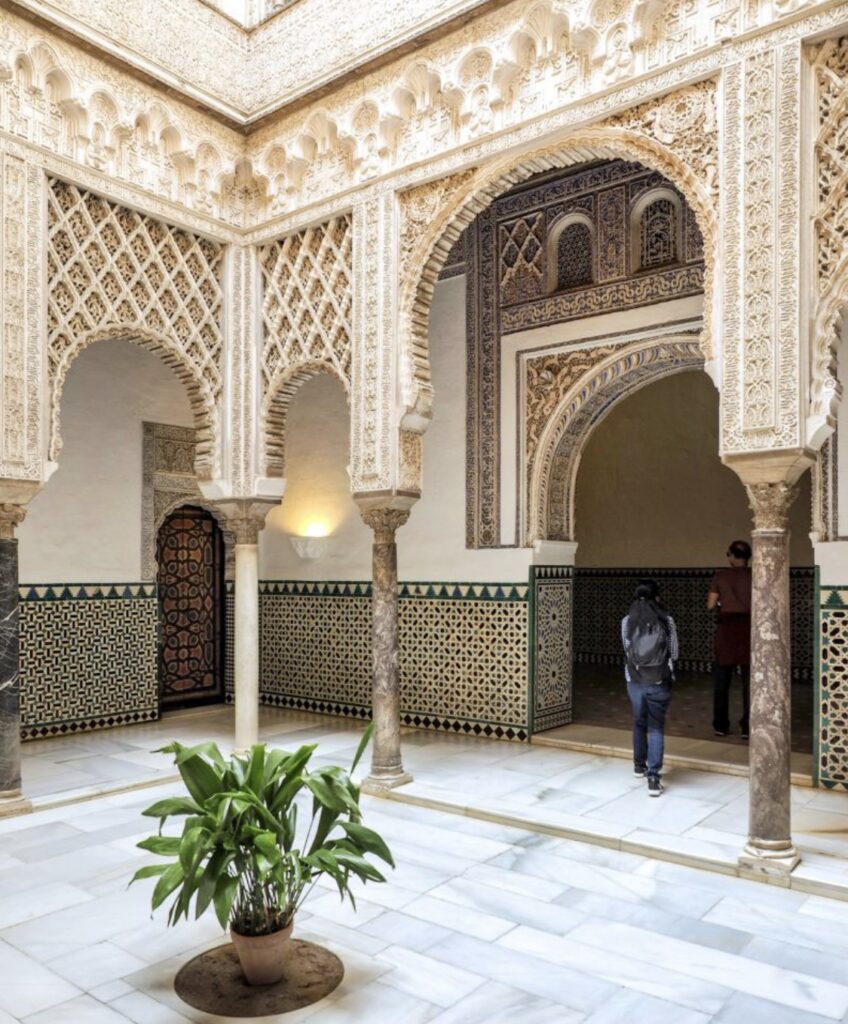
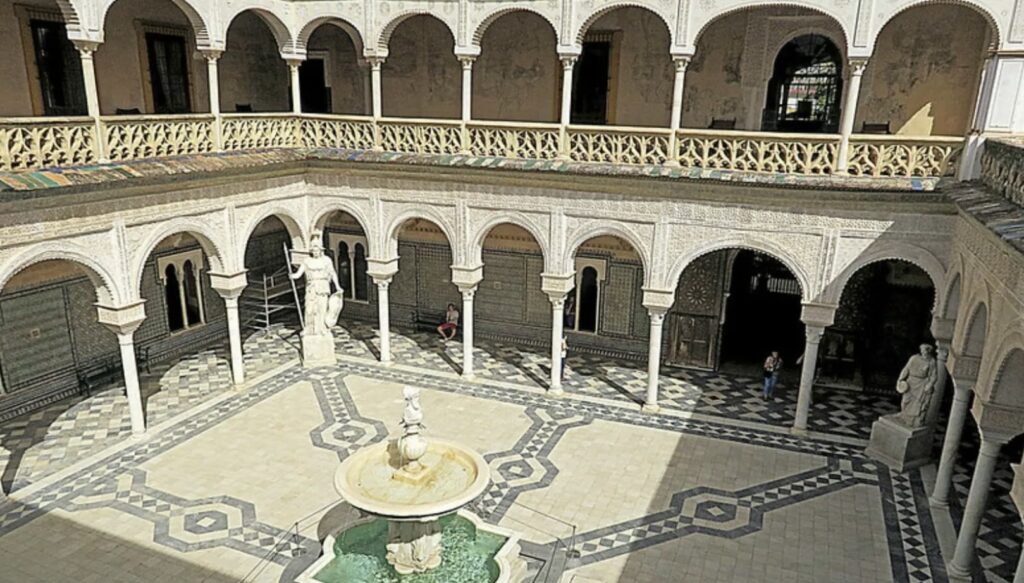
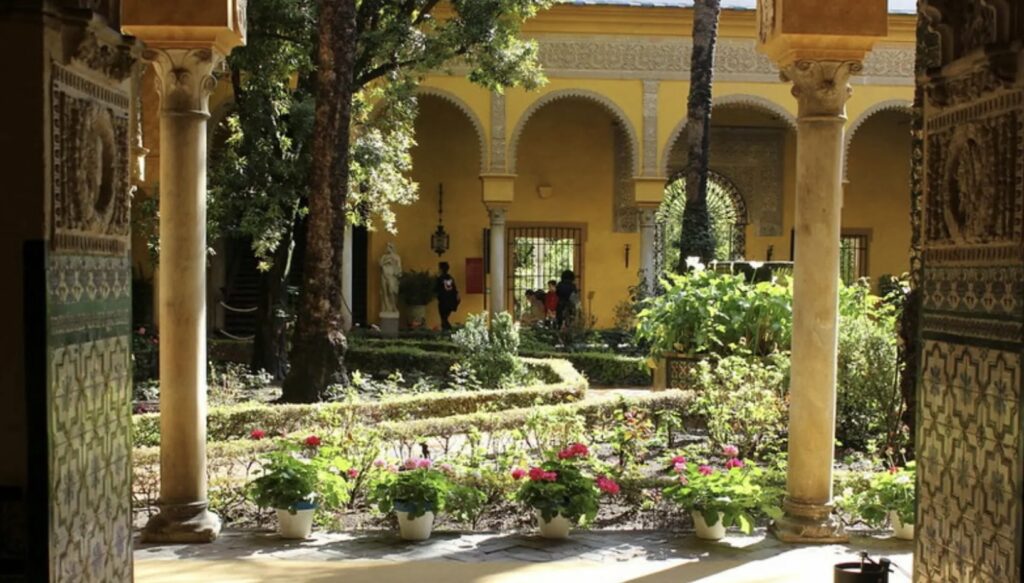
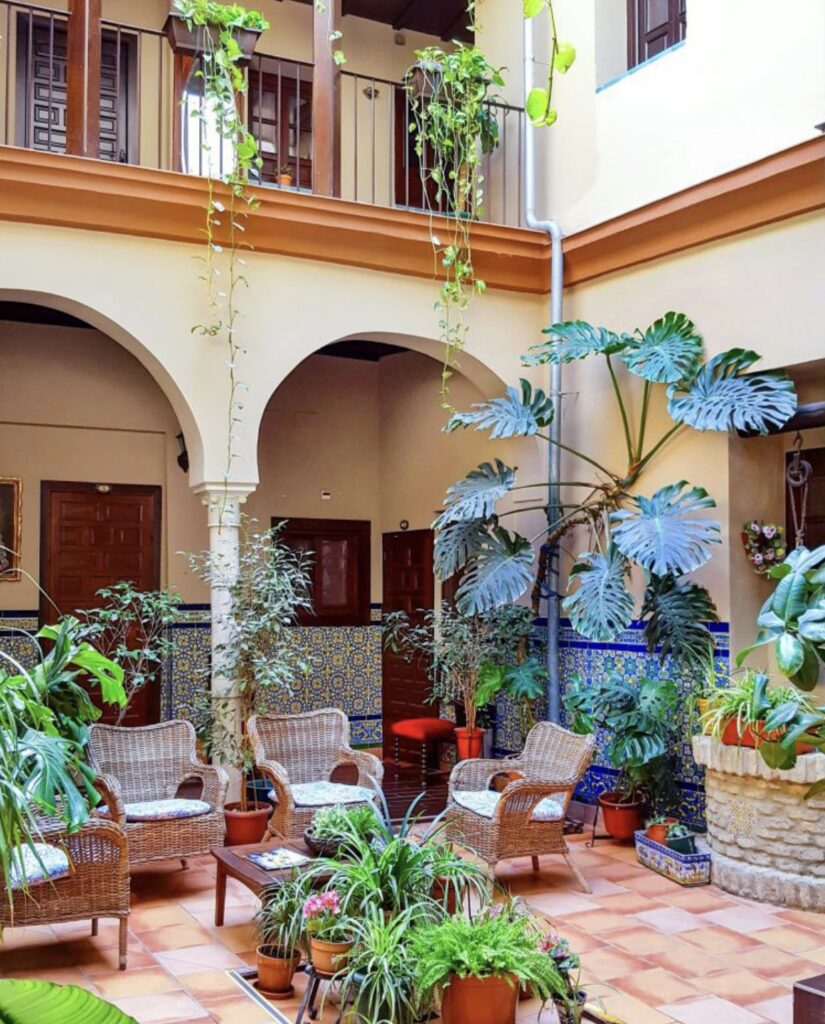
Attending the Festival of the Patios in Seville is a unique experience that allows visitors to explore some of the city’s most beautiful and historic courtyards, many of which are typically private. Here’s how you can attend and make the most of this event:
1. Timing and Dates
- When: The Festival of the Patios in Seville usually takes place in May, coinciding with the city’s famous Feria de Abril. The exact dates can vary each year, so it’s important to check the official schedule closer to your visit.
- Duration: The festival typically lasts for about two weeks, giving you ample time to explore the patios at your leisure.
2. Location
- Neighborhoods: The festival mainly takes place in Seville’s historic neighborhoods, particularly in Barrio Santa Cruz, Triana, and the Jewish Quarter. Some of the most beautiful patios are also found in private homes, public buildings, and palaces like Casa de Pilatos and Palacio de las Dueñas.
3. Tickets and Access
- Free Entry: Many of the patios are open to the public free of charge during the festival. However, some private residences and historic buildings may require a small entry fee or donation.
- Guided Tours: Consider booking a guided tour for a more in-depth experience. These tours often include access to multiple patios, along with expert commentary on the history and architecture of the spaces.
- Maps and Guides: Upon arrival, you can often find maps and brochures at tourist information centers that list the participating patios and provide a walking route. These are very helpful for navigating the festival.
4. Best Times to Visit
- Early Morning or Late Afternoon: To avoid crowds, it’s best to visit the patios early in the morning or later in the afternoon. These times also offer the best lighting for photography.
- Weekdays: If possible, plan your visit on a weekday, as weekends tend to be busier.
5. What to Expect
- Decorated Patios: During the festival, the patios are adorned with flowers, plants, fountains, and other decorative elements. Many feature live music or performances, adding to the festive atmosphere.
- Cultural Activities: In addition to the patios, there are often cultural activities such as flamenco performances, workshops, and exhibitions related to Seville’s history and traditions.
- Local Interaction: The festival is a great opportunity to meet locals and learn about their traditions. Homeowners often take great pride in their patios and are happy to share their history with visitors.
6. Practical Tips
- Comfortable Shoes: Wear comfortable walking shoes, as you’ll be exploring different neighborhoods on foot, often on cobblestone streets.
- Camera: Bring a camera or smartphone to capture the stunning beauty of the patios. Remember to be respectful when taking photos, especially in private homes.
- Respect the Space: Remember that many of the patios are part of private homes, so be respectful of the property and the residents. Avoid loud behavior and follow any posted rules.
7. Plan Ahead
- Accommodation: Book your accommodation well in advance, as May is a busy month in Seville due to multiple festivals.
- Weather: May in Seville can be quite warm, so dress accordingly and stay hydrated.
8. Combine with Other Events
- Feria de Abril: If you’re visiting during the Festival of the Patios, you may also want to attend Seville’s Feria de Abril, a lively week-long fair featuring flamenco, bullfighting, and parades. This usually takes place around the same time, offering a full cultural experience.
By planning ahead and following these tips, you’ll be able to fully enjoy the Festival of the Patios and experience one of Seville’s most beloved traditions.
